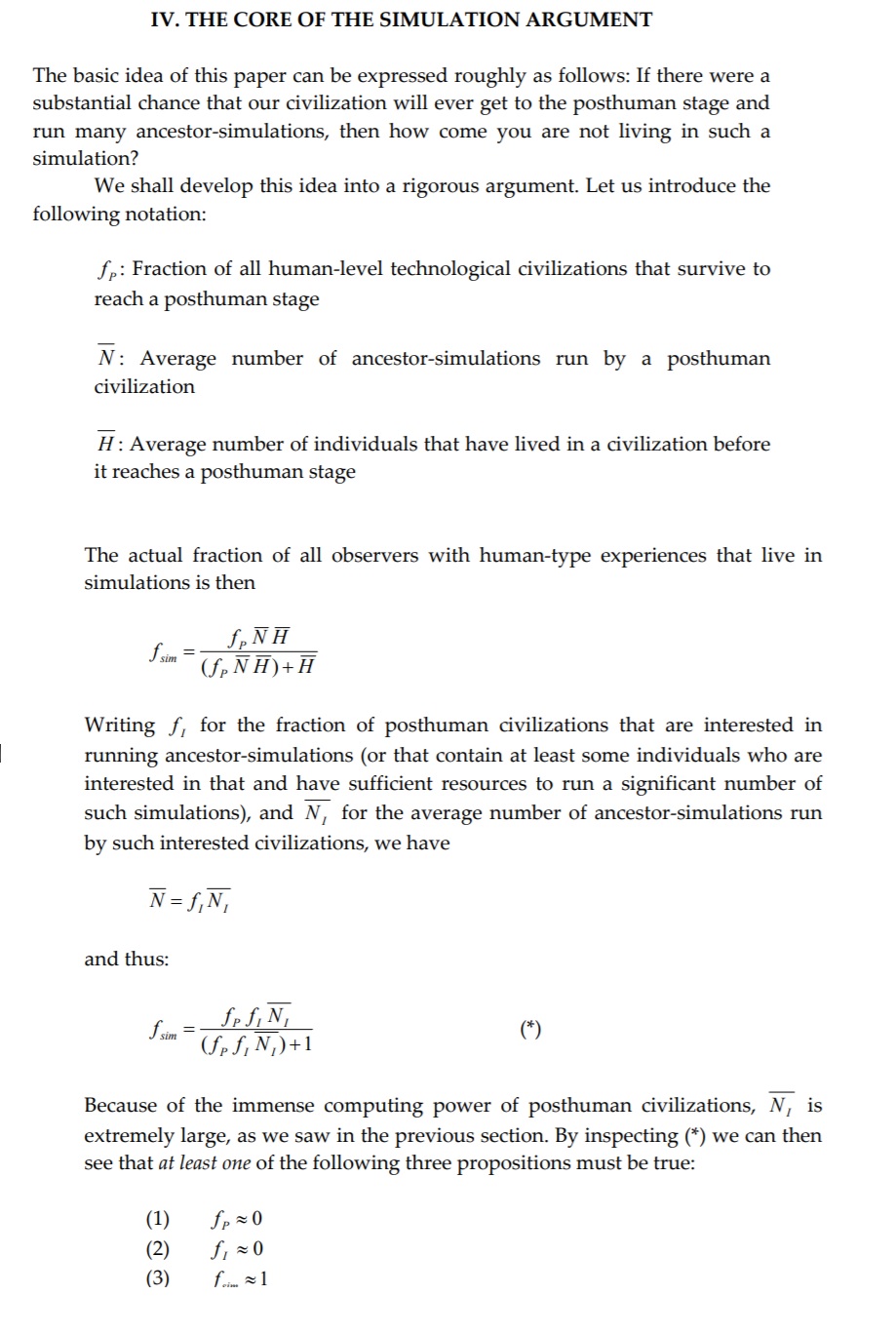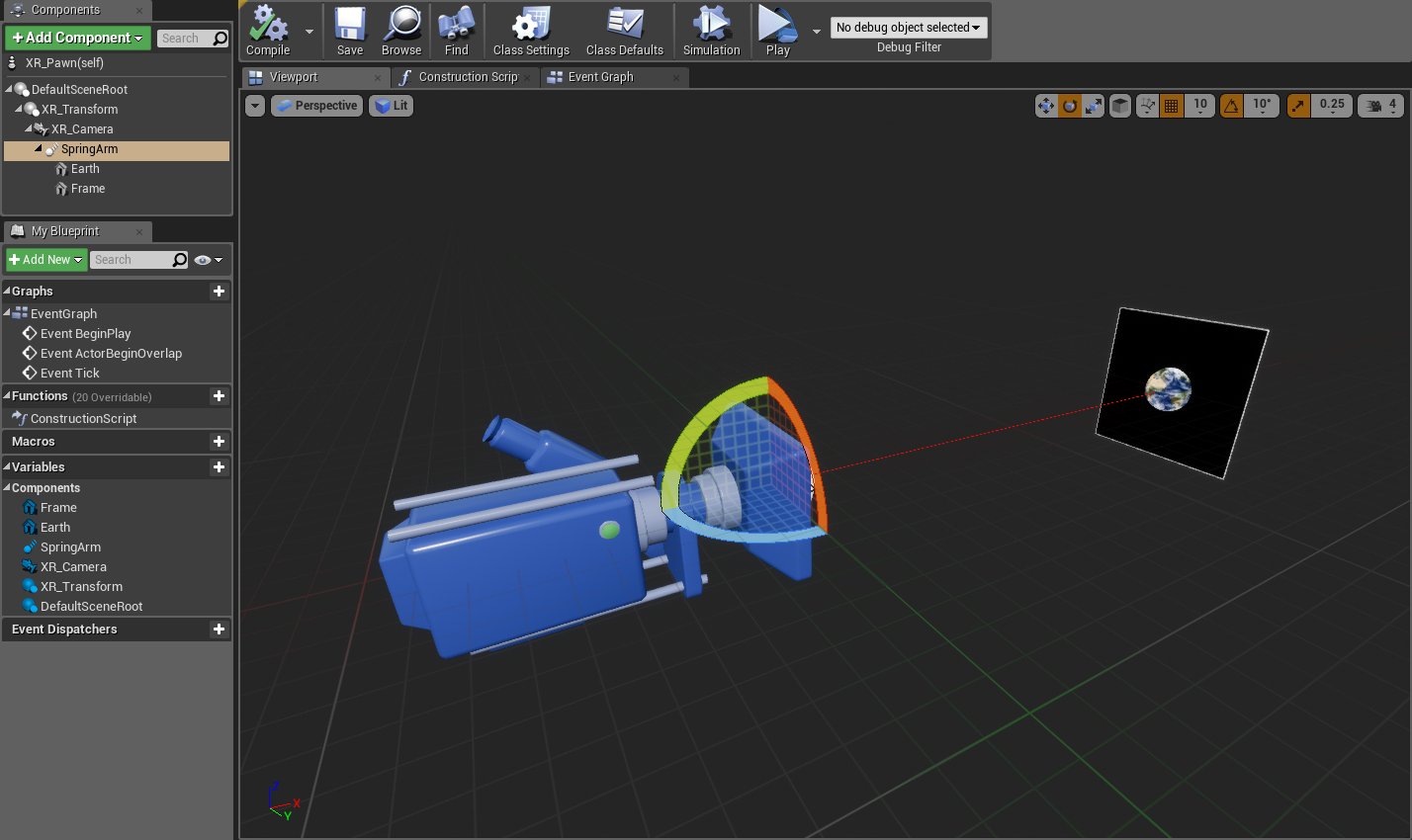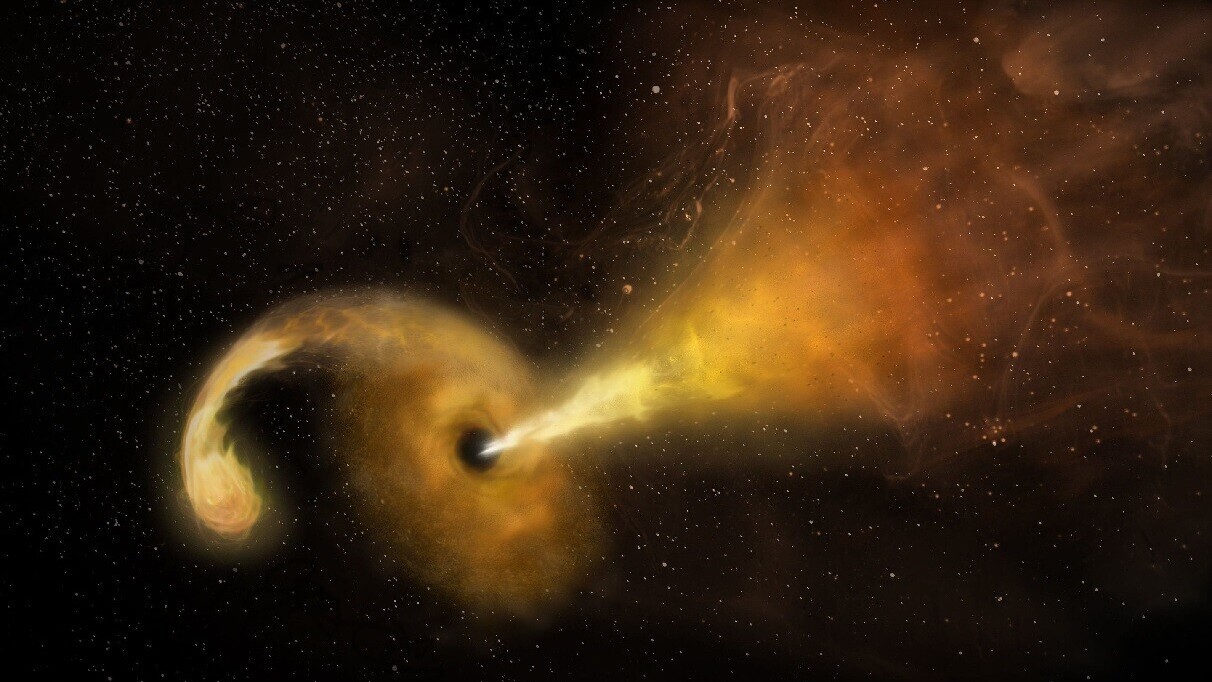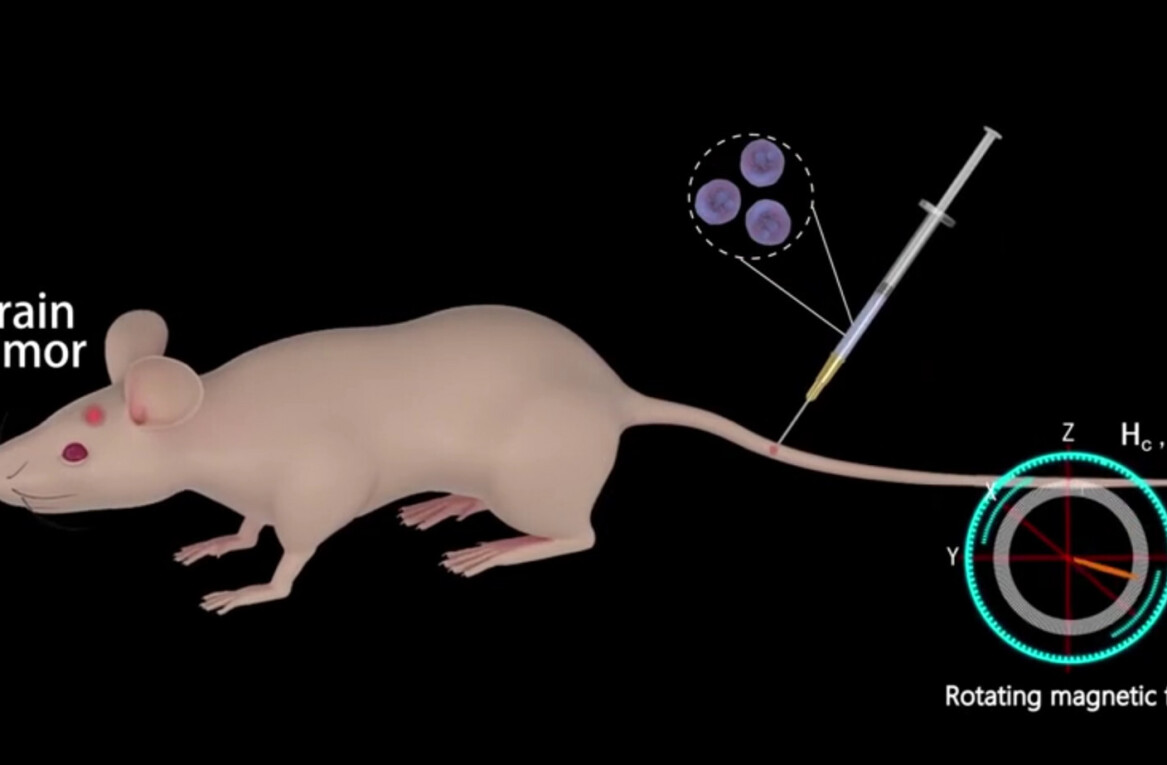Swedish Philosopher Nick Bostrom’s simulation argument says we might be living in a computer-generated reality. Maybe he’s right. There currently exists no known method by which we could investigate the parameters of our “programming,” so it’s up to each of us to decide whether to believe in The Matrix or not.
Perhaps it’s a bit more nuanced than that though. Maybe he’s only half-wrong – or half-right, depending on your philosophical view.
What if we are living in a simulation, but there’s no computer (in the traditional sense) running it?
Here’s the wackiest, most improbable theory I could cobble together from the weirdest papers I’ve ever covered. I call it: “Simulation Argument: Live and Unplugged.”
Philosophy!
Bostrom’s hypothesis is actually quite complicated:

But it can be explained rather easily. According to him, one or more of the following statements must be true:
- The human species is very likely to go extinct before reaching a “posthuman” stage
- Any posthuman civilization is extremely unlikely to run a significant number of simulations of their evolutionary history (or variations thereof)
- We are almost certainly living in a computer simulation
Bostrom’s basically saying that humans in the future will probably run ancestry simulations on their fancy futuristic computers. Unless they can’t, don’t want to, or humanity gets snuffed out before they get the chance.
Physics!
As many people have pointed out, there’s no way to do the science when it comes to simulation hypothesis. Just like there’s no way for the ants in an ant colony to understand why you’ve put them there, or what’s going on beyond the glass, you and I can’t slip the void to have a chat with the programmers responsible for coding us. We’re constrained by physical rules, whether we understand them or not.
Quantum Physics!
Except, of course, in quantum mechanics. There, all the classical physics rules we spent millennia coming up with make almost no sense. In the reality you and I see every day, for example, an object can’t be in two places at the same time. But the heart of quantum mechanics involves this very principal.
The universe at large appears to obey a different set of rules than the ones that directly apply to you and I in our everyday existence.
Astrophysics!
Scientists like to describe the universe in terms of rules because, from where we’re sitting, we’re basically looking at infinity from the perspective of an amoeba. There’s no ground-truth for us to compare notes against when we, for example, try to figure out how gravity works in and around a black hole. We use rules such as mathematics and the scientific method to determine what’s really real.
So why are the rules different for people and stars than they are for singularities and wormholes? Or, perhaps more correctly: if the rules are the same for everything, why are they applied in different measures across different systems?
Wormholes, for example, could, in theory, allow objects to take shortcuts through physical spaces. And who knows what’s actually on the other side of a black hole?
But you and I are stuck here with boring old gravity, only able to be in a single place at a time. Or are we?
Organic neural networks!
Humans, as a system, are actually incredibly connected. Not only are we tuned in somewhat to the machinations of our environment, but we can spread information about it across vast distances at incredible speeds. For example, no matter where you live, it’s possible for you to know the weather in New York, Paris, and on Mars in real-time.
What’s important there isn’t how technologically advanced the smart phone or today’s modern computers have become, but that we continue to find ways to increase and evolve our ability to share knowledge and information. We’re not on Mars, but we know what’s going on almost as if we were.
And, what’s even more impressive, we can transfer that information across iterations. A child born today doesn’t have to discover how to make fire and then spend their entire life developing the combustion engine. It’s already been done. They can look forward and develop something new. Elon Musk’s already made a pretty good electric engine, so maybe our kids will figure out a fusion engine or something even better.
In AI terms, we’re essentially training new models based on the output from old models. And that makes humanity itself a neural network. Each generation of human adds selected information from the previous generation’s output to their input cycle and then, stack by stack, develop new methods and novel inferences.
The Multiverse!
Where it all comes together is in the wackiest idea of all: our universe is a neural network. And, because I’m writing this on a Friday, I’ll even raise the stakes and say our universe is one of many universes that, together, make up a grand neural network.
That’s a lot to unpack, but the gist involves starting with quantum mechanics and maintaining our assumptions as we zoom out beyond what we can observe.
We know that subatomic particles, in what we call the quantum realm, react differently when observed. That’s a feature of the universe that seems incredibly significant for anything that might be considered an observer.
If you imagine all subatomic systems as neural networks, with observation being the sole catalyst for execution, you get an incredibly complex computation mechanism that’s, theoretically, infinitely scalable.
Rather than assume, as we zoom out, that every system is an individual neural network, it makes more sense to imagine each system as a layer inside of a larger network.
And, once you reach the biggest self-contained system we can imagine, the whole universe, you arrive at a single necessary conclusion: if the universe is a neural network, its output must go somewhere.
That’s where the multiverse comes in. We like to think of ourselves as “characters” in a computer simulation when we contemplate Bostrom’s theory. But what if we’re more like cameras? And not physical cameras like the one on your phone, but more like the term “camera” as it applies to when a developer sets a POV for players in a video game.

If our job is to observe, it’s unlikely we’re the entities the universe-as-a-neural-network outputs to. It stands to reason that we’d be more likely to be considered tools or necessary byproducts in the grand scheme.
However, if we imagine our universe as simply another layer in an exponentially bigger neural network, it answers all the questions that derive from trying to shoehorn simulation theory into being a plausible explanation for our existence.
Most importantly: a naturally occurring, self-feeding, neural network doesn’t require a computer at all.
In fact, neural networks almost never involve what we usually think of as computers. Artificial neural networks have only been around for a matter of decades, but organic neural networks, AKA brains, have been around for at least millions of years.
Wrap up this nonsense!
In conclusion, I think we can all agree that the most obvious answer to the question of life, the universe, and everything is the wackiest one. And, if you like wacky, you’ll love my theory.
Here it is: our universe is part of a naturally-occurring neural network spread across infinite or near-infinite universes. Each universe in this multiverse is a single layer designed to sift through data and produce a specific output. Within each of these layers are infinite or near-infinite systems that comprise networks within the network.
Information travels between the multiverse’s layers through natural mechanisms. Perhaps wormholes are where data is received from other universes and black holes are where its sent for output extraction into other layers. Seems about as likely as us all living in a computer right?
Behind the scenes, in the places where scientists are currently looking for all the missing dark matter in the universe, are the underlying physical mechanisms that invisibly stitch together our observations (classical reality) with whatever ultimately lies beyond the great final output layer.
My guess: there’s nobody on the receiving end, just a rubber hose connecting “output” to “input.”
Get the TNW newsletter
Get the most important tech news in your inbox each week.






